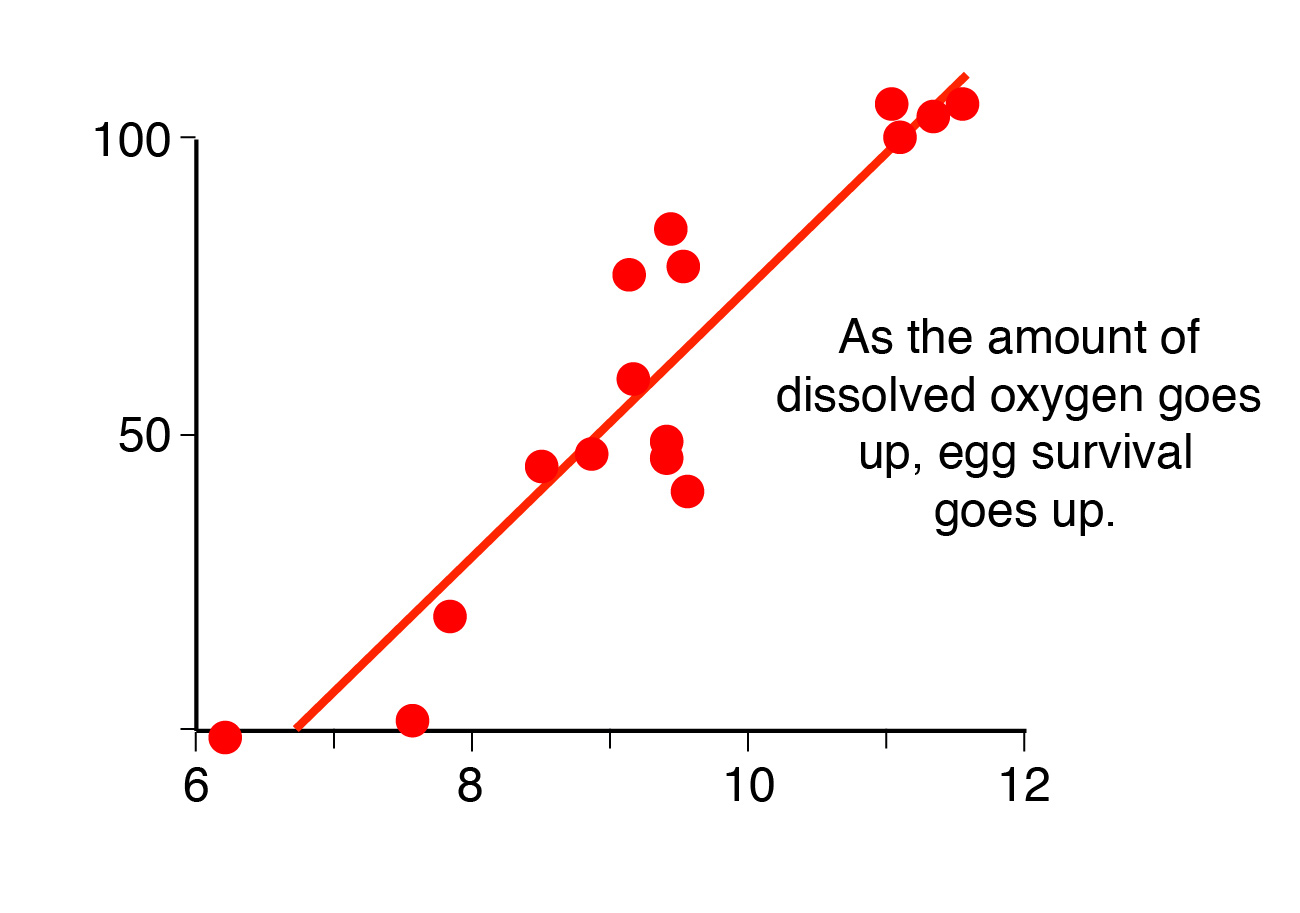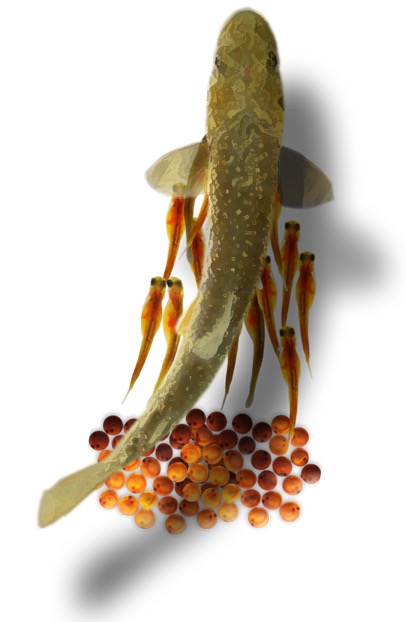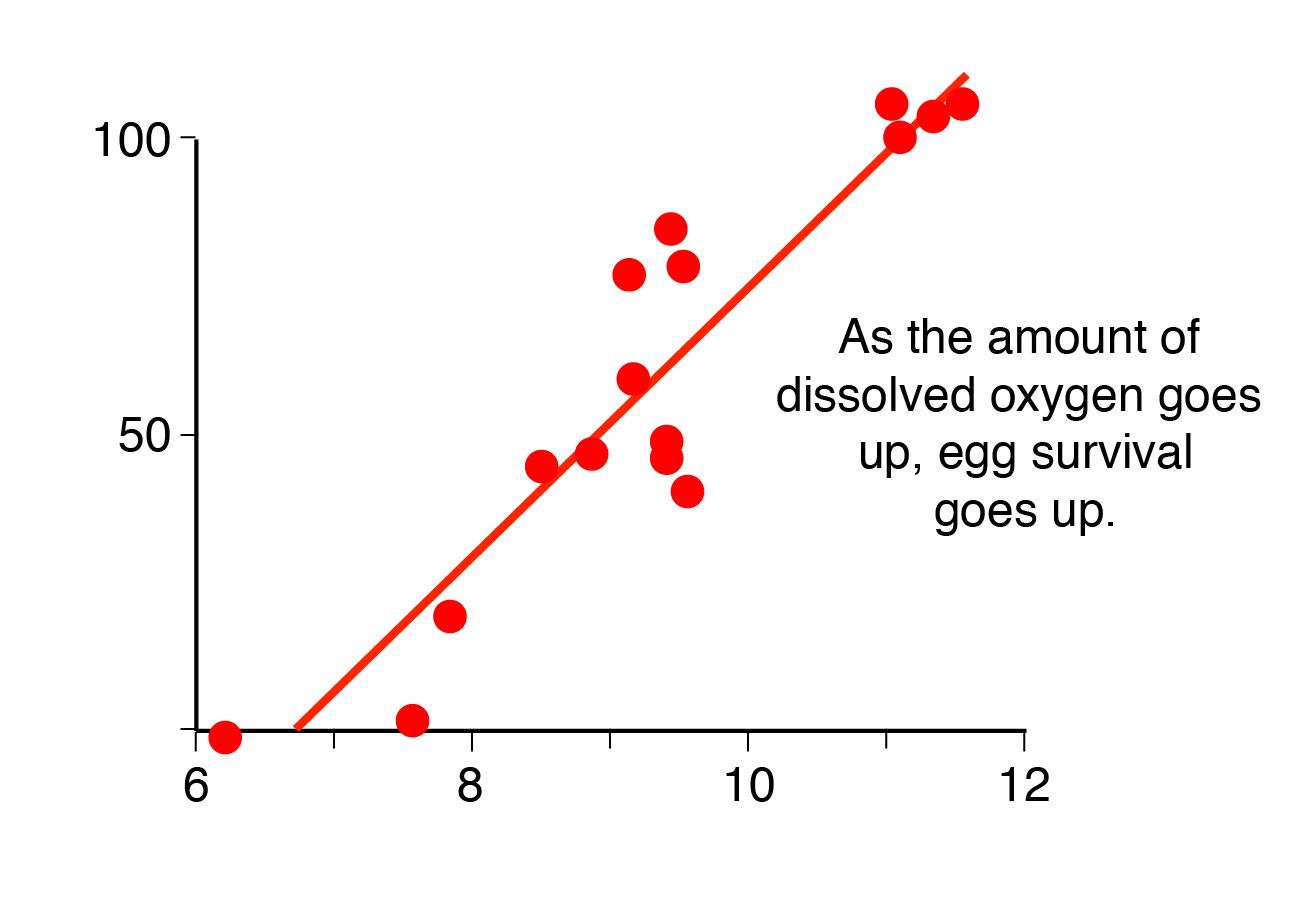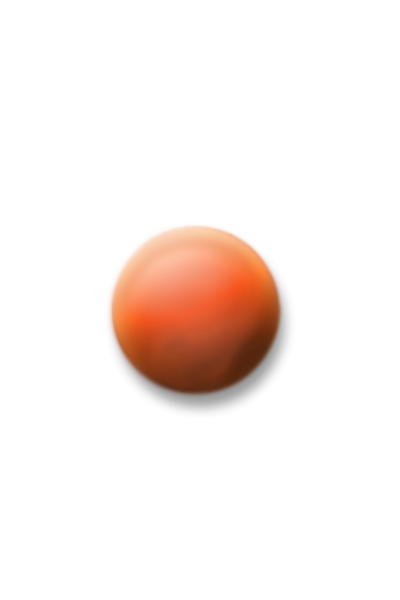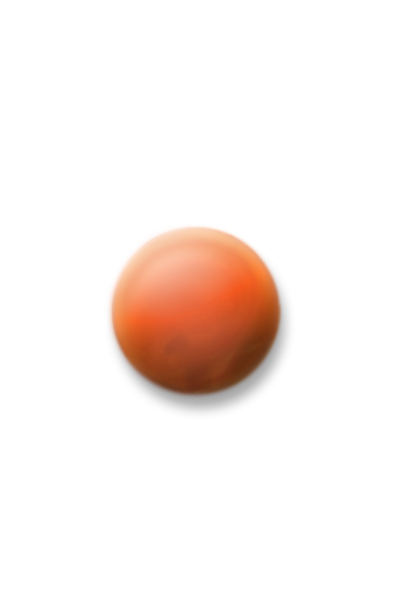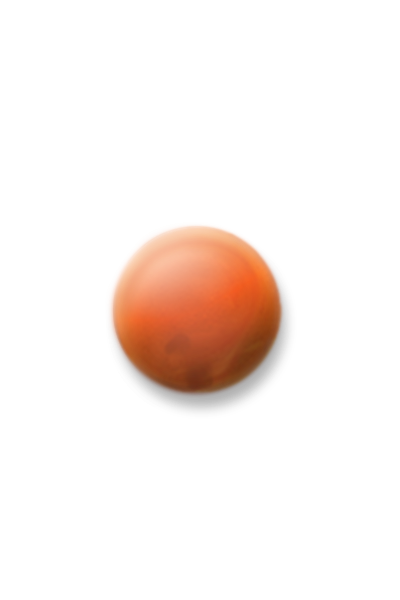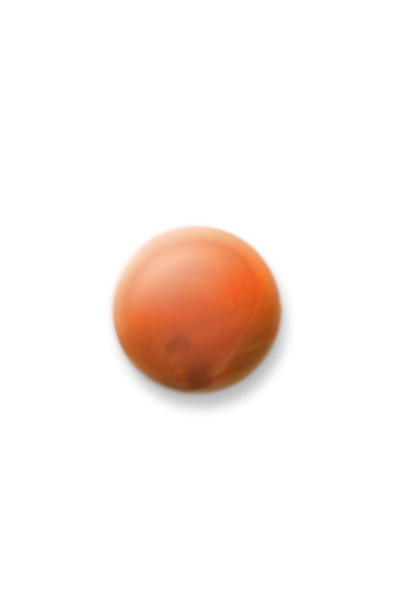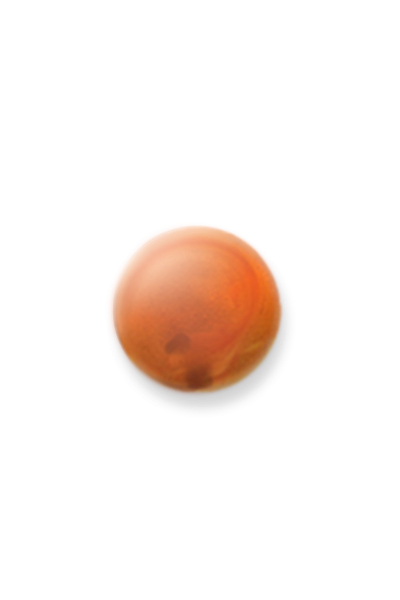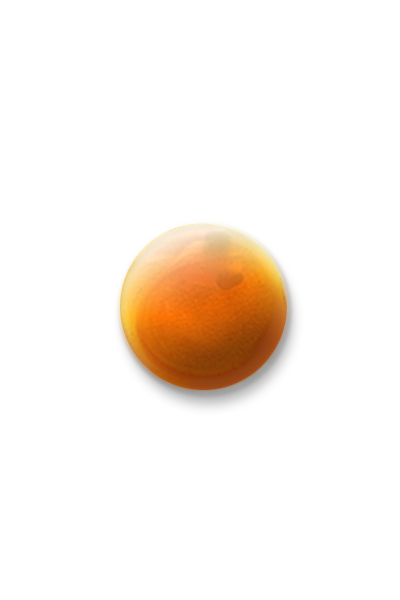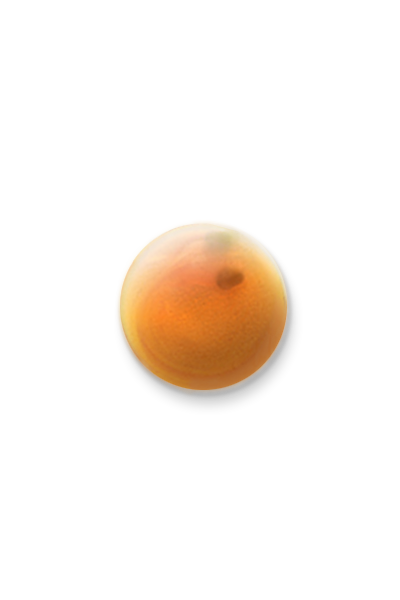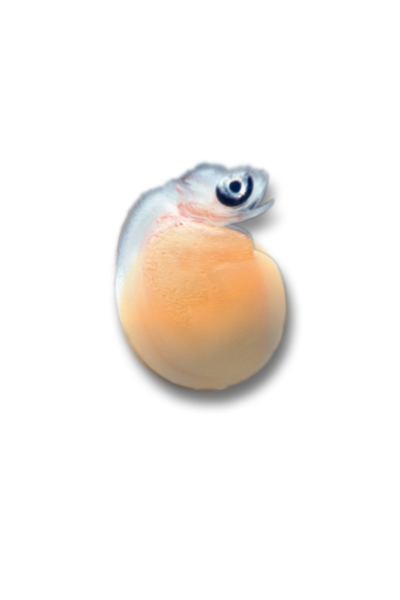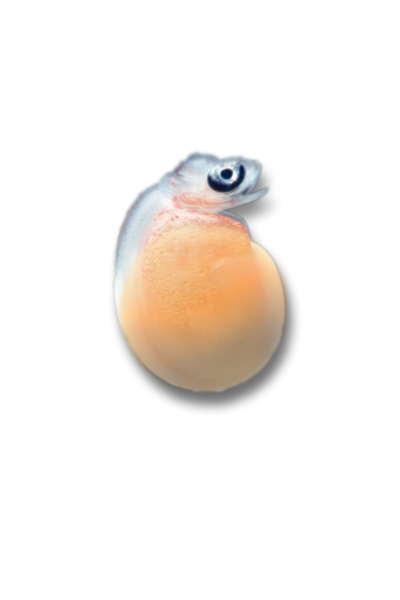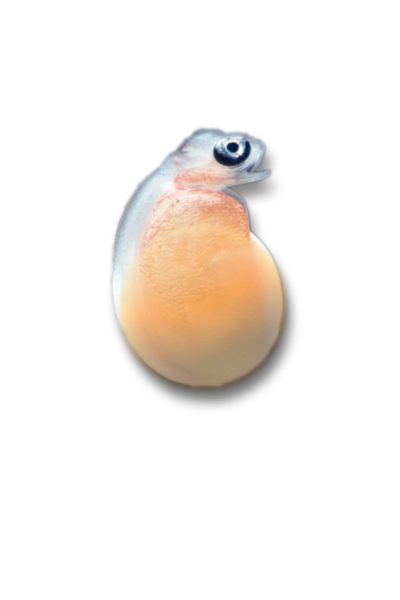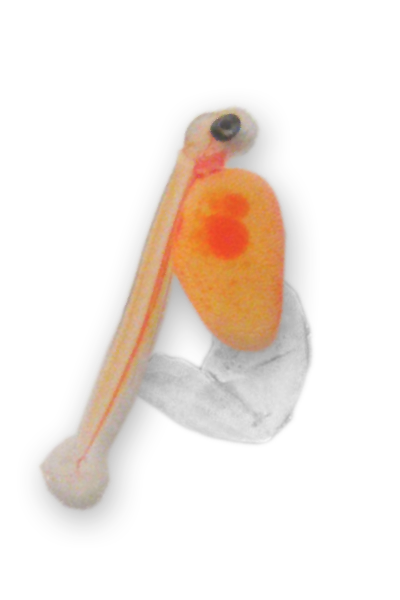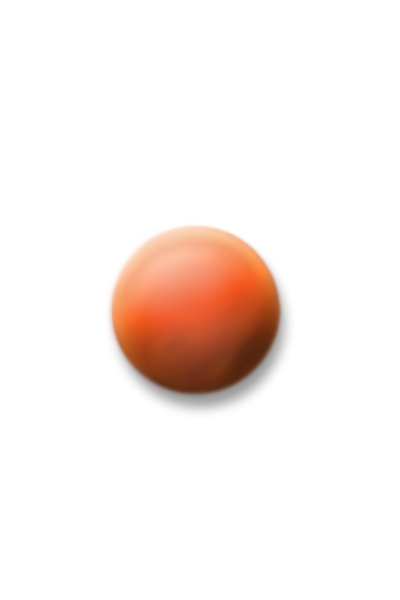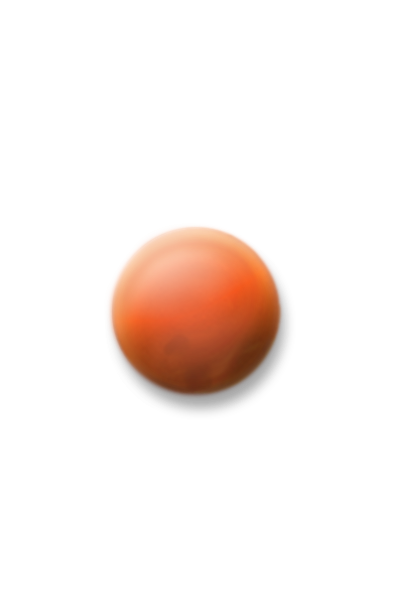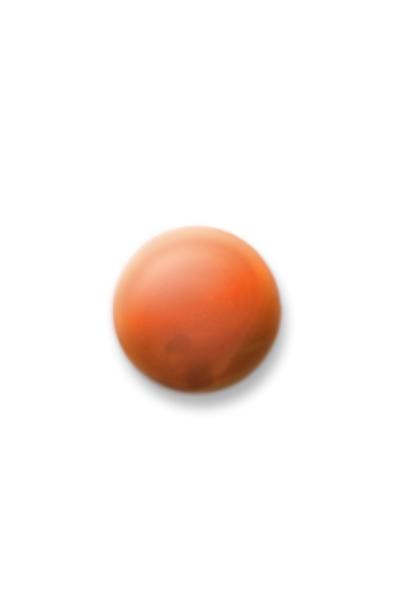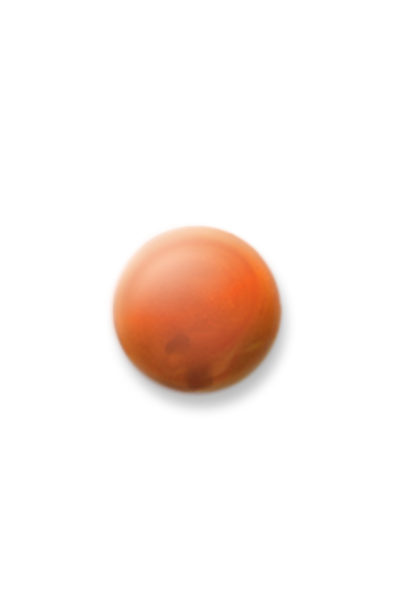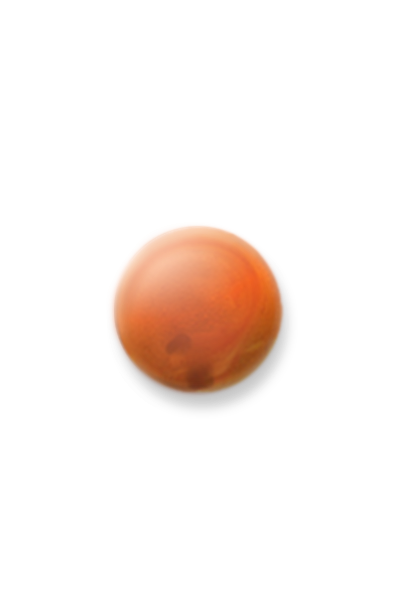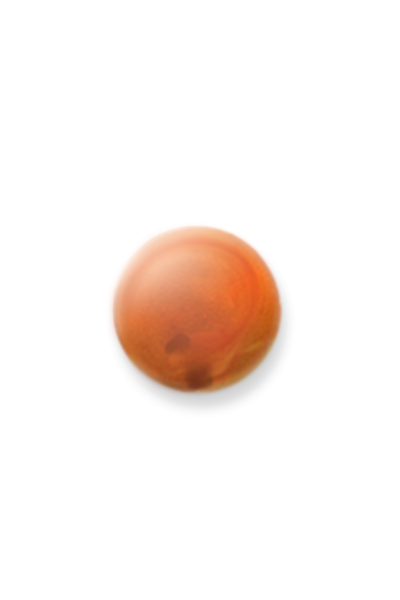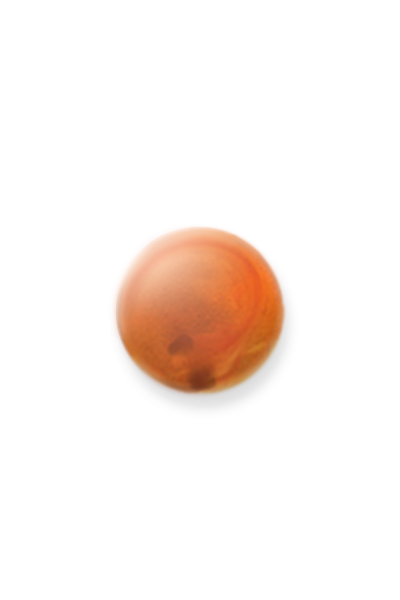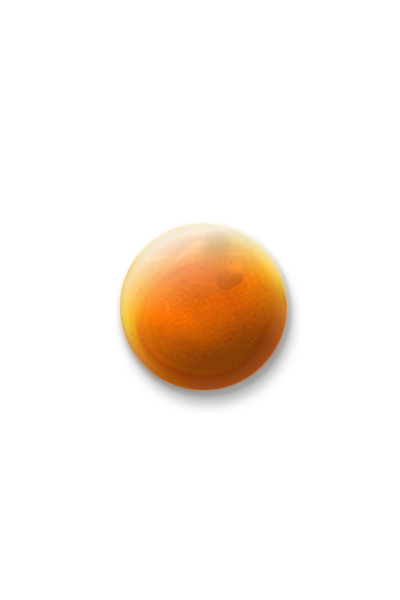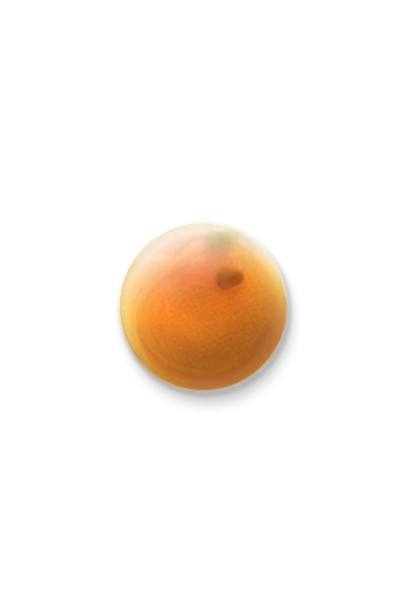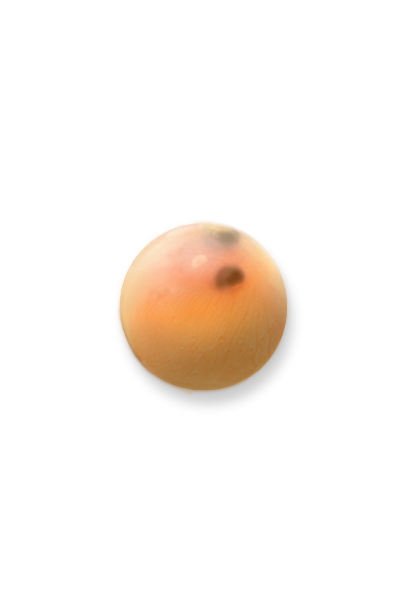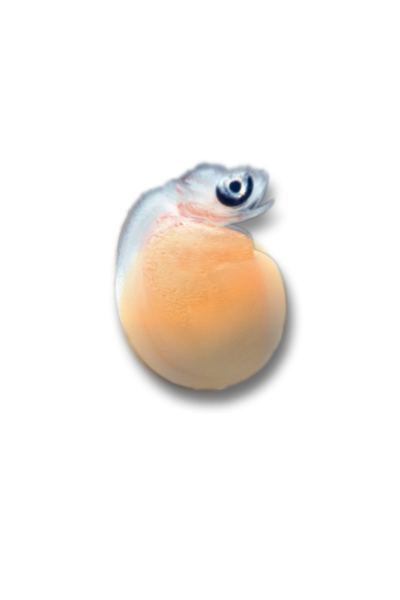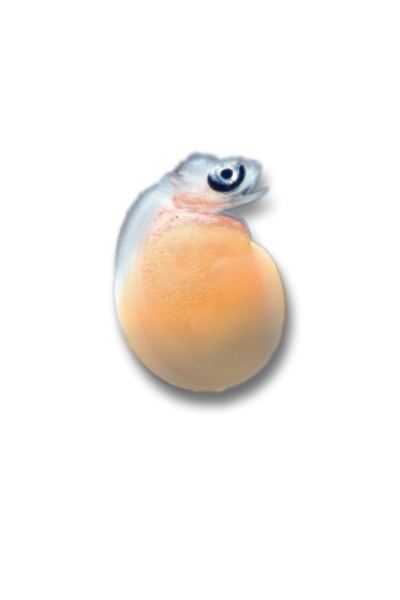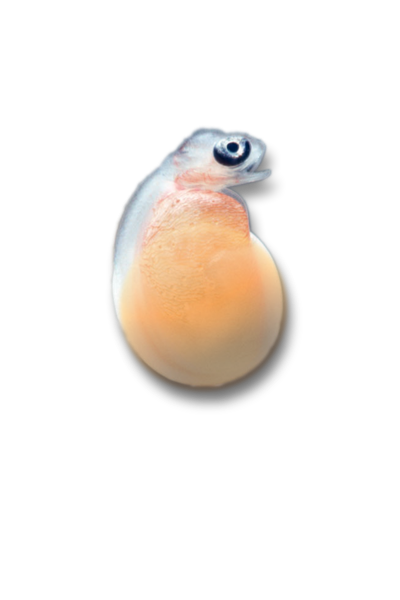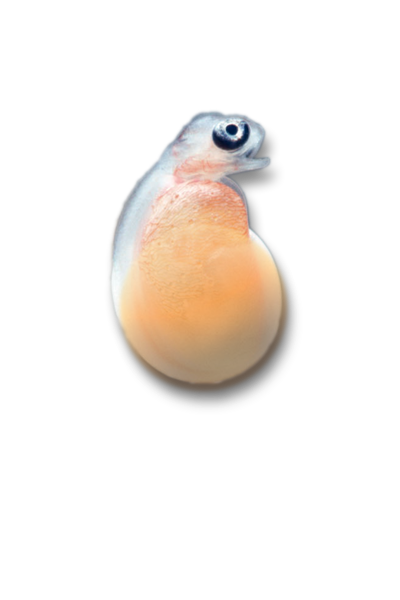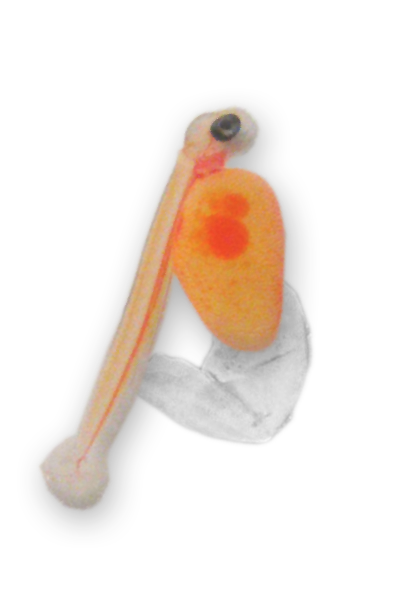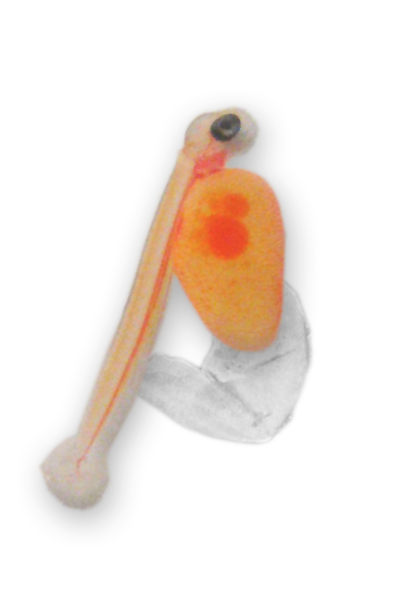From Egg to Alevin
After egg deposition in the fall, relatively warm temperatures facilitate rapid embryonic development. These warmer temperatures, usually 40-50°F, are followed by much colder winter temperatures that approach freezing and subsequently decrease the rate of embryonic development. As winter progresses into spring and temperatures increase, the rate of development is again increased.
Incubation can be divided into four stages:
(1) The pre-eyed stage. During this time the egg is a uniform redish-orange color. Cell division begins as does the development of pre-organ systems. This stage is very sensitive to disturbance.
(2) The eyed stage. Once the eyes become pigmented, the egg is said to be in the eyed stage. The embryo, less sensitive now, begins to develop its organs. Stages one and two combined take from 100 to 145 days.

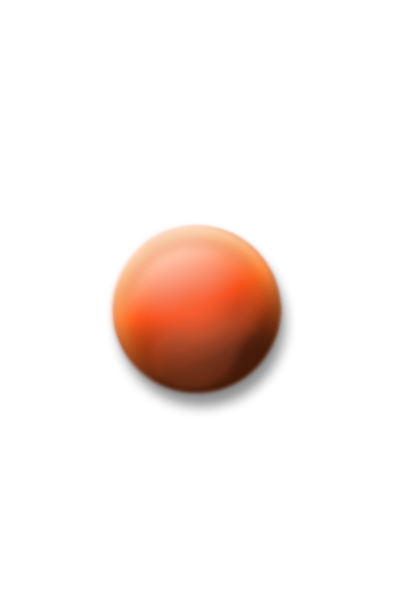
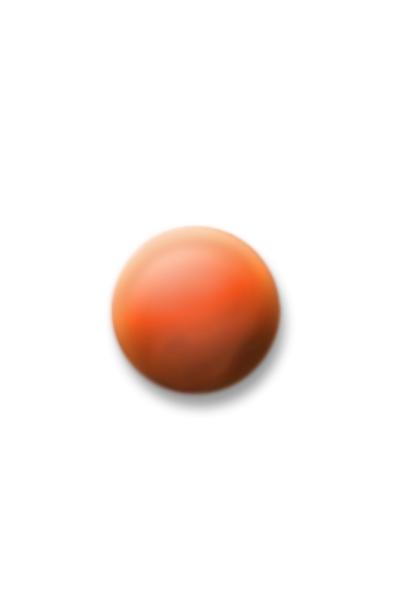


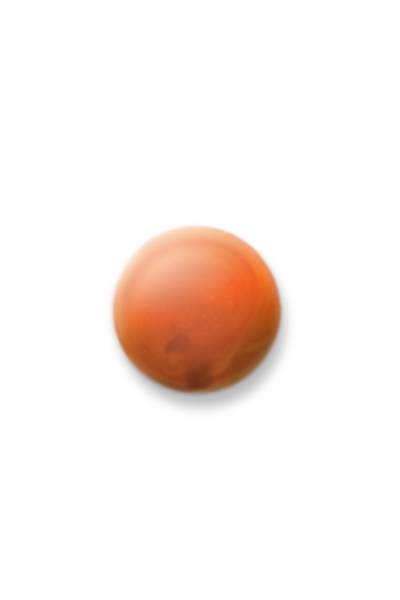
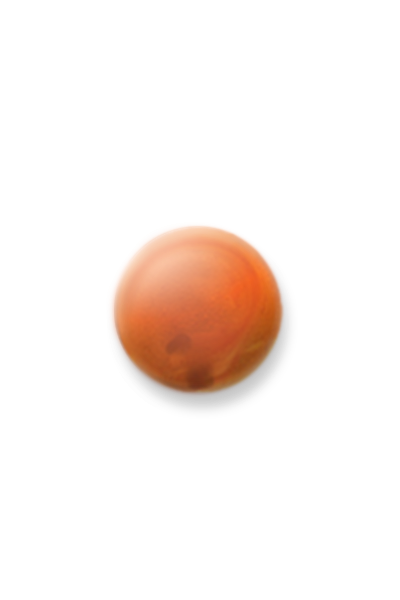
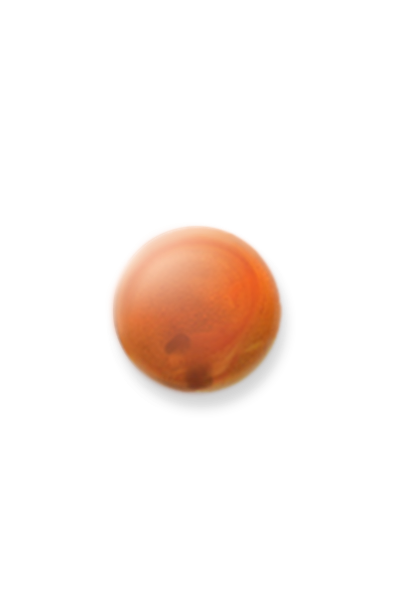


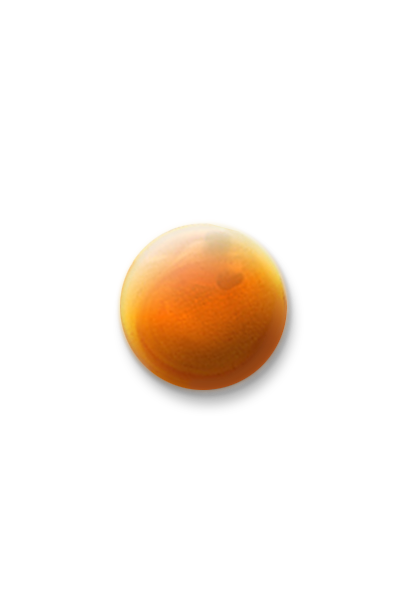
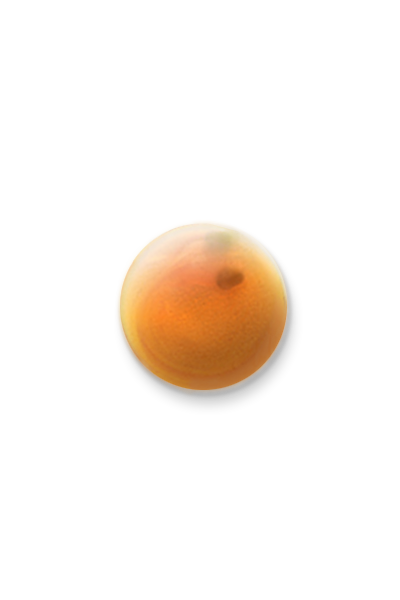
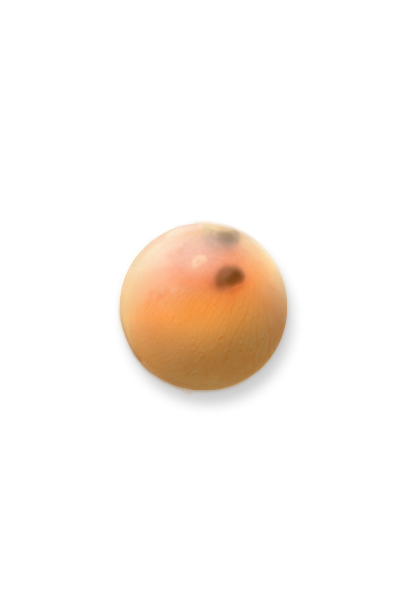
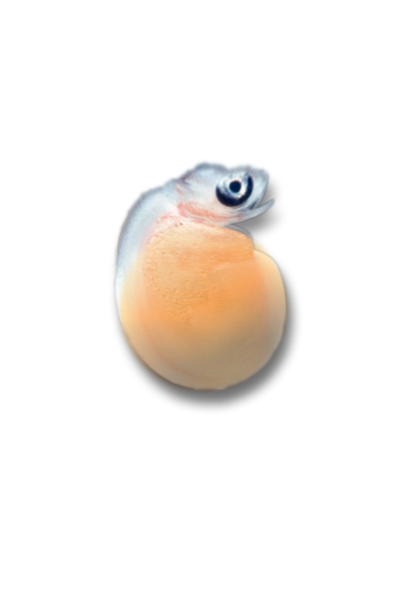

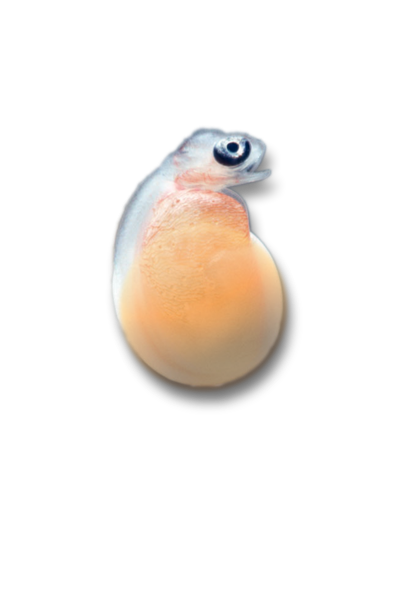

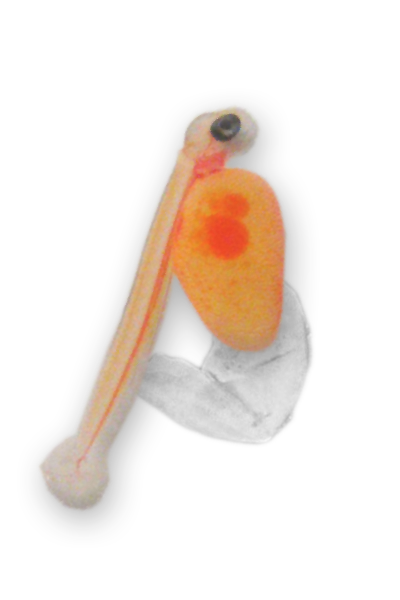
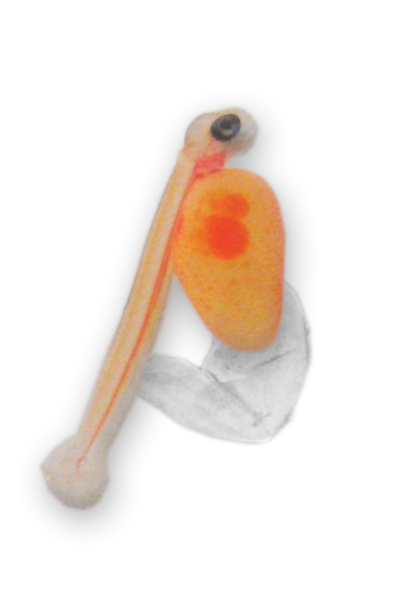
(3) The alevin stage. The larvae has hatched but has not fully absorbed its yolk sac, has not yet emerged from the gravel of the redd, and cannot swim well. During this stage, the larvae slowly absorbs its yolk sac (its energy source) while its mouth, digestive tract, and excretory organs develop. This stage takes another 65 to 90 days.
(4) The emergence of fry. After the yolk sac is absorbed, the young trout, now about an inch long, is called a fry. It can swim, and it moves up and out of the gravel (emergence). Immediately it darts to the surface and gulps air to fill its air bladder. From this point on it is a free-swimming fish, and it begins to forage for food.
The total incubation time, which depends on water temperature, takes from 200 to 220 days (from October to emergence in mid April to May). The optimal water temperature during this time is from about 36 to 39°F.
CTUs: A Tool for Predicting Early Development
The term “Celsius Temperature Units” (CTU's) sounds complicated but it really isn’t. Here is the formula: A CTU is one degree Celsius for 24 hours. For example, a water temperature of 10° C for one day equals 10 CTUs. Or, 10° C for 12 hours (half a day) is equal to 5 CTUs. Degree days is another term for the same concept.
CTUs are useful because temperature affects bull trout in critical ways— everything from the rate at which eggs develop to the amount of food that fry require and the amount of dissolved oxygen that water will hold. So CTU measurements are used by biologists and in hatcheries to determine the stage of egg development, and to predict the date eggs will hatch. While the method is surprisingly accurate, other factors in the wild, such as oxygen level and water flow, affect development too.
Click on the page 2 button above to see the number of CTUs required for each stage of early bull trout development.
CTUs Appearance of Developmental Features in Bull Trout Eggs & Alevins
167 Forebrain, midbrain and two areas of hindbrain formed
206 Eyes with a few pigment cells formed
245 Beating heart is now apparent
288 Jaws are forming
332 Blood is now moving through the gill arches
443 Some eggs are hatching, tail fin rays are well defined
503 Hatching is nearly complete
548 Mouth is opening and closing regularly, and swimming can be observed
687 Pelvic fin rays poorly defined
810 Yolk sac is no longer apparent, parr marks appearing
